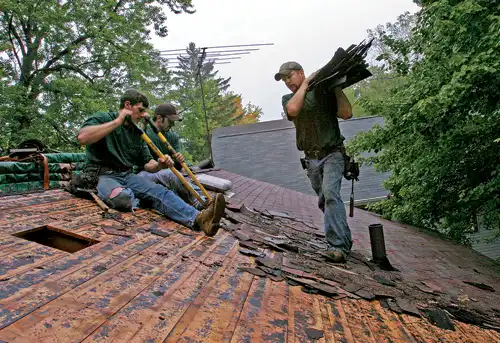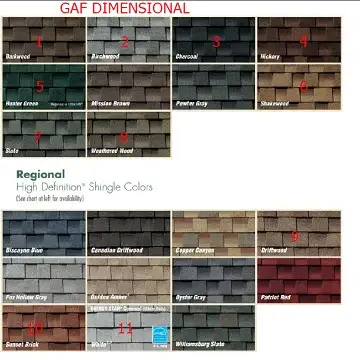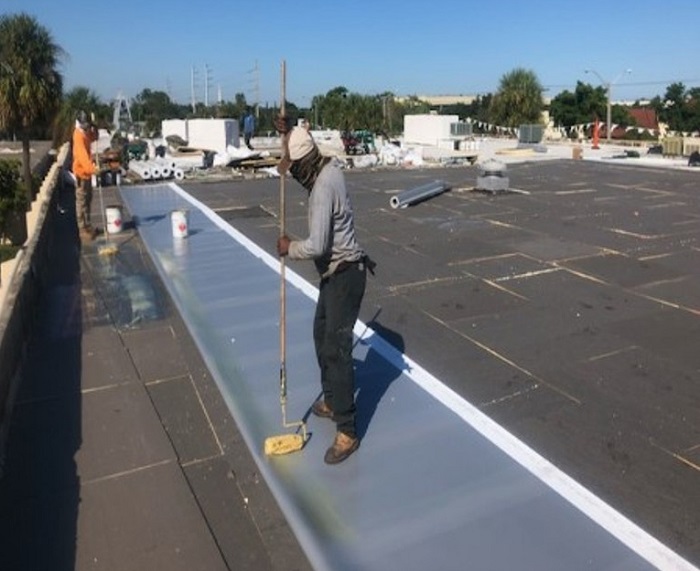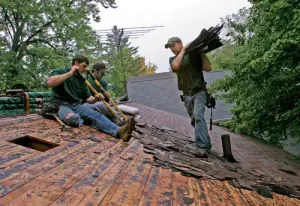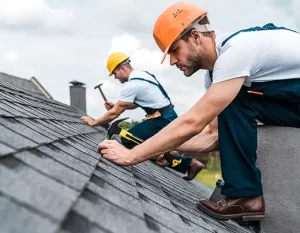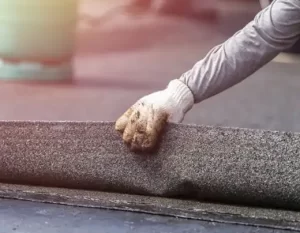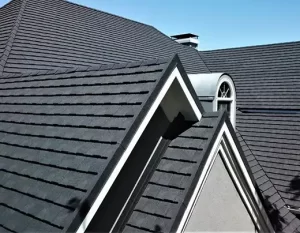Get Some Fresh Roof Attic Air: Your Guide to Roof Ventilation and Five Undeniable Reasons to Replace your Vents
According to the Federal Trade Commission, over half of the energy used in a home is used by heating and cooling it.
A roof is the best way to protect a home from the cold of the winter and the heat of the summer. Poor ventilation in roofs can lead to higher bills and lower energy efficiency ratings.
Keep reading to find out more about the different types of roof ventilation and Five Undeniable Reasons to Replace your Vents available and which one is right for you and your home.
Why Is Roof Ventilation Important?
Roof ventilation helps air pass through and out of your attic, ensuring that unwanted heat and moisture are abstracted from the air. This airflow helps to keep your home at a comfortable temperature and safe.
Poor roof ventilation can lead to higher energy bills and a poorer energy efficiency rating in your home. On average, Americans spend $661 a year on natural gas to heat and fuel their homes, but with a better-ventilated roof, you could expect to spend less on heating your home.
Without proper ventilation on your roof, your home could also be subjected to mold and mildew. This is because condensation has no way of escaping from your house. Poor ventilation can also lead to voided roof warranties and damaged roofs, which will be costly to fix.
What Are the Different Types of Roof Vents?
There are two main categories when it comes to vents; intake vents and exhaust vents. Intake vents are placed at the lowest edge of the roof and ensure airflow enters the eaves. While exhaust vents are placed at the highest point of the roof and ensure air is pulled inside as it leaves the attic.
It might not be necessary to have both intake and exhaust vents, however, you do need to have exhaust vents and plenty of them. Different types of roof vents provide different benefits and purposes. Certain roof vents might be better for your home, depending on the setup and airflow of your home.
Exhaust Roof Ventilation Types
Exhaust vents take out the hot and humid air in your attic. The most common exhaust vents are wind turbines, off ridge vents, ridge vents, power vents (hardwired roof vents and solar-powered roof vents), hip vents, box vents, and cupola vents. Some exhaust vents need to be combined with intake vents otherwise they are as effective.
1. Wind Turbines
Wind turbines don’t use any electricity, instead, as the name suggests, they use wind power to pull the hot and humid air out of attic or roof spaces. These vents are effective in areas where there is plenty of wind (although it doesn’t always need to be blowing up a storm for these exhaust vents to work). Wind turbines are affordable roof ventilation options that are durable and long-lasting.
2. Off Ridge Vents
Off ridge vents are less popular than other vents, but they are good at removing hot air and moisture from roof spaces. However, these vents require a cutout in the roof and are smaller than other types of exhaust vents so you do need several of them to properly ventilate your home.
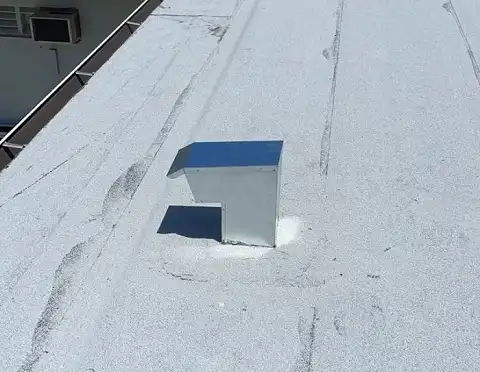
3. Ridge Vents
Ridge vents are very popular among homeowners perhaps because they are fitted at the peak of the roof slope and are almost impossible to see. Ridge vents are more costly but they do provide an even distribution of air in roof spaces, as opposed to only flowing air at specific areas. Ridge vents are usually combined with intake vents such as soffit vents.
4. Power Vents
Power vents use electric power to run a motor, which pushes hot air out of the roof space. Power vents also help to reduce moisture and humidity in the air. There are two types of power vents, hardwired and solar-powered roof vents, both are small and offer excellent efficiency for your home.

5. Hip Vents
Similar to the ridge vent, the hip vent is a great alternative for those with pyramid-shaped roofs. Roofs that are steep lack ridges and so these hip vents can be placed over the side hip seams to help evenly distribute the air in an attic. Just like the ridge vent, the hip vent is very effective, low-profile, and must be combined with a soffit vent (for maximum efficiency.)
6. Box Vents
Another popular exhaust vent is the box vent. Box vents work best with open attics and are typically combined with soffit vents. Box vents don’t use electricity, but instead, rely on wind to flow through and with the help of the soffit vent, the box vent is able to pull out all the hot air and moisture.
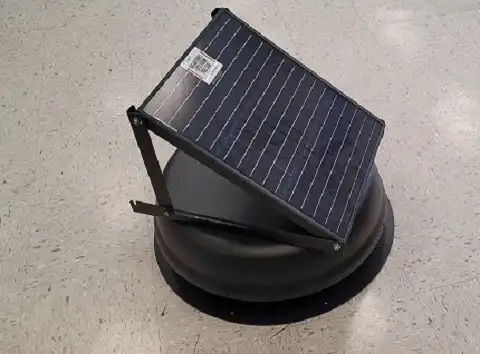
7. Cupola Vents
Cupola vents are an old design, but still effective. They allow spaces to be ventilated and they also ensure a light source in your attic. Most people use these vents on outhouses, barns, or sheds, however, some people use these vents in their homes (although they can be expensive).
Choosing the right exhaust vents for your house can be confusing, so if you don’t know which one will work best for your roof space make sure you ask an experienced roofing company that specializes in energy-efficient roofs.
Types of Roof Ventilation: Intake Vents
Most intake vents work better with other types of ventilation (such as exhaust vents). Intake vents pull in air, creating a good airflow in your attic space and cooling down the room. Common intake vents include soffit vents, fascia vents, and drip-edge vents.
1. Soffit Vents
Soffit vents are usually placed underneath an eave, instead of on the roof. Soffit vents can help get rid of humid and warm air in roof spaces. As already mentioned, they work best with other types of exhaust ventilation, however, they can work well on their own too.
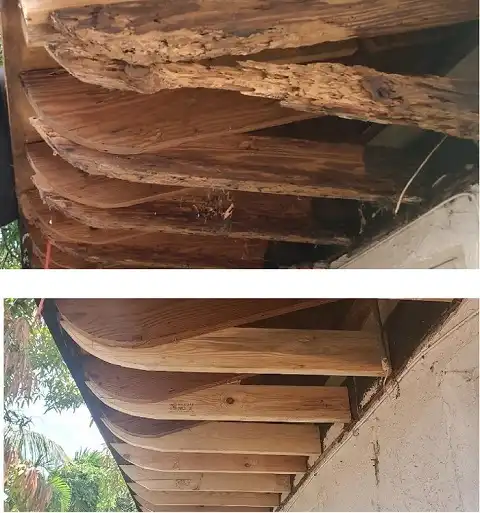
2. Fascia Vents
Fascia vents work well alongside hip vents and are often placed on pyramid-shaped roofs. Combining a hip vent and a fascia vent can save you significant amounts of money because pyramid-shaped roofs often have large roof spaces which can be expensive to heat or cool.
3. Drip-Edge Vents
Some roofs can’t cater to soffit vents, so the drip-edge vent is the perfect solution for these roofs. They attach to the drip edge of a roof and offer great intake ventilation. Drip-edge vents can work well by themselves (if they’re installed correctly), but they work even better with an exhaust vent.
Start Saving Money and the World With Roof Ventilation
With so many types of residential roof vents to choose from including exhaust and intake vents, you’ll be sure to find the one that is right for your home and your budget. For those who want to save their wallets and the planet all at the same time, roof ventilation is essential for your home.
At Planet Roofing, we are dedicated to ensuring that you get the right amount of ventilation in your home and that your roof lasts longer and performs better. Get in touch with our friendly team either by phone or email to discuss your roofing project.

